British F-35B jets will be equipped with Meteor missiles by the ‘middle of this decade’ say the Ministry of Defence.
The information came to light in a response to a written question submitted in the House of Commons.
Mark Francois, Member of Parliament for Rayleigh and Wickford, asked:
“To ask the Secretary of State for Defence, what his timetable is for the Meteor air-to-air missile to achieve initial operating capability on the F-35 aircraft.”
Jeremy Quin, Minister of State at the Ministry of Defence, responded:
“Initial development work for Meteor integration has progressed well. The Lightning Delivery Team within Defence Equipment and Supply (DE&S), through F-35 Joint Program Office has signed a contract to integrate Meteor in the middle of the decade.”
Previously we reported that a team of BAE Systems, Lockheed Martin and MBDA engineers are enhancing the capability of the UK’s fleet of F-35 Lightning aircraft by commencing work on the integration of next generation weapons.
BAE Systems has received an initial funding award from Lockheed Martin, the prime contractor on the F-35 programme, to start integration efforts for MBDA’s Meteor beyond visual range air-to-air missile and SPEAR precision surface attack missile. Under this initial package of work BAE Systems and Lockheed Martin will also complete further integration work with MBDA on ASRAAM and with Raytheon on Paveway IV, initially integrated in support of delivering Initial Operating Capability for the UK.
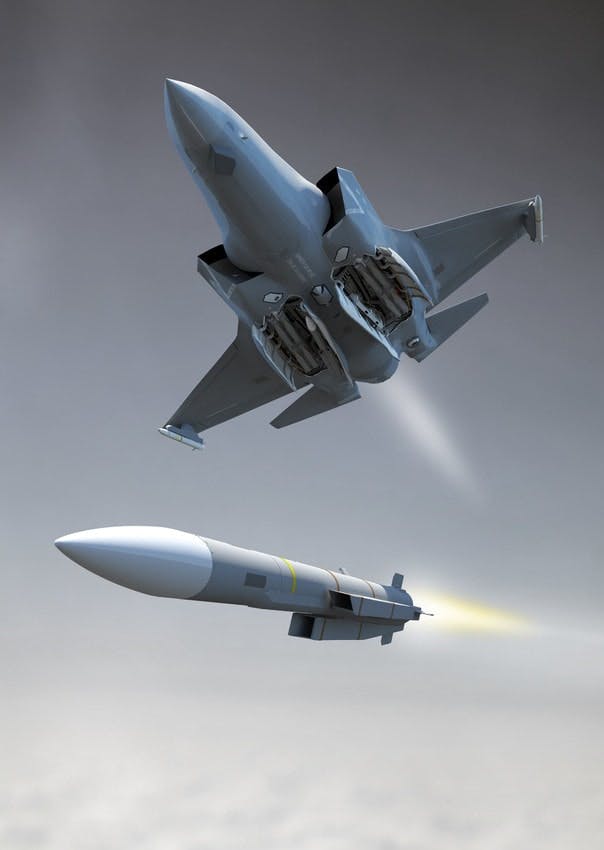
Cliff Waldwyn, Head of Combat Air, Group Business Development of MBDA, said:
“This is a significant milestone for the UK Combat Air’s capability. This initial package of work officially commences the integration of Meteor and SPEAR and will enhance the operational capability of the UK’s Lightning Force in the future; it is also a positive step for the wider F-35 enterprise as it adds additional capability choice for international customers. MBDA’s integration team have worked well with our BAE Systems and Lockheed Martin colleagues and we plan to build on this excellent foundation into the future on this follow-on modernisation work.”
Meteor is a ‘Beyond Visual Range Air-to-Air Missile’ system developed by MBDA.
The Meteor programme sees the UK, France, Germany, Italy, Spain and Sweden working together to provide access to technology and expertise across those nations.
You can read more about the missile here.
The Ministry of Defence recently revealed the cost of adding ASRAAM and SPEAR-3 missiles as well as Paveway IV guided bombs to the F-35B Lightning II.
You can read more about that by clicking here or visiting the link below.




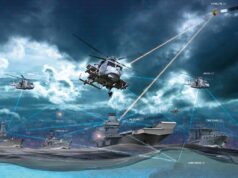

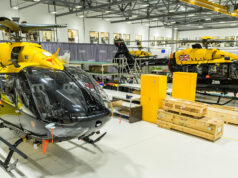



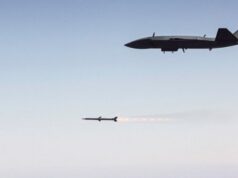
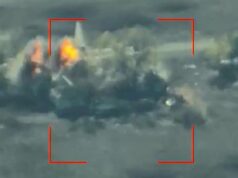


Interesting, I was under the impression that S3 & Meteor integration was aligned with the introduction of Blk4 software!
Latest reports have its introduction delayed until 2026ish – have LM recovered some slippage time?
2026 is still middle of decade, and before the software goes live they will still need to do the fitment and drop tests.
Meteor and Spear 3 will be real game changes, combined with the radars electronic attack capability and we will have an immensely capable platform, one that will be truly feared by potential opponents.
Don’t forget the EW version of Spear 3 😀
Good shout Ron, that will certainly make for some nervous radar operators…..
That’s if it goes into production and gets integrated…
Still just a demo contract at present, although all the mood music is good…
Am i right in saying F-35Bs can only hold 2 Meteors? I know the missile itself is very capable but having just 2 per aircraft isn’t really good is it.
I think it’s two lots of two in the bays at the moment. Maybe they can squeeze another one each and under the wings.
I thought it was three per bay, two mounted internally and one on the inside of the door?
Just the 4 in total, 1 on each bay door and one mounted in each bay.
The Sidekick rack that enables carriage of 2 mounted in each bay (6 missiles in total) will not fit the F-35B, only works for the larger bays on F-35A and C.
Thanks for that,
I suppose 4 Meteor and two wing mounted ASRAAM is still quite the ‘ruin your whole day’ load out…..
Yes, 2023-2027 could well be regarded as middle of the decade, but, a 2 year slippage is still a 2 year slippage.
To be fair, HMG are in between a rock and a hard place, trying to put a positive spin on a situation not of their making. It’s a LM issue as they are responsible for delivering Blk4 software on time/price.
How useful will Meteor be against other missiles? I know its primary target will be jet aircraft and possibly UAVs, although in the case of UAVs, the cost per missile of £1700000 the threat would have to be significant.
maybe use the main gun against uavs?
I can imagine people being a little nervous about an F-35 getting close enough to the action to use guns.
Wouldn’t a cheaper air-air sidewinder be the weapon of choice against a UAV?
One of its design sets is to shoot down cruise missiles. But, pretty much whatever it’s radar can lock on to will be doable.
wait so why don’t they make land launched version of the meteor?
Because MBDA also make Aster. Meteor should be good against targets up to 70,000ft. Its air breathing ramjet will start to struggle higher up. Aster 30 (Block 1NT) being initially rocket propelled can hit a least 100,000ft. Both hit well over Mach 4 on the speed front.
It would be an interesting comparison, to see how many advantages Meteor has over Aster and vice versa, but only MBDA really know the answer. If Meteor was fitted on the Aster 30 Block 1NT rocket booster, what range, speed and height could it achieve? I would surmise that it would go further than Aster (not including the BMD version) due to the use of the ramjet to keep the speed up. I would suspect that the Meteor would travel at low hypersonic speeds of between Mach 5 and 6 for a fair bit before the ramjet can no longer help to sustain those speeds. Meanwhile, the Aster will literally throw itself at the target by using its mid body reaction jets.
But it does raise some interesting questions. Especially as the Aster dart and Meteor are comparable in size.
Lets not forget the IRIS T, for which such a landbased version has actually been developed (Sweden being the first buyer, and Germany likely to follow suit soon).
You could say the same for CAMM (SeaCeptor and SkySabre). The Sidewinder has also been used as a ground based SAM.
The Iris-T is a true dogfighting missile though, unlike ASRAAM. It has one of the tightest turning radius’s. But that comes at a cost. To enable to turn so fast it has aerodynamic strakes plus control fins. When doing very tight turns these create a lot of drag, which robs the missile of energy. In doing so it means it has a pretty short range, even when compared to Sidewinder, ASRAAM has a significantly further range than Sidewinder.
Iris-T, Sidewinder-X and ASRAAM all used the same Hughes imaging infrared seeker when they were first introduced. As part of ASRAAMs upgrade it’s getting a higher resolution seeker.
The Iris-T SAM system is a short ranged air defence system (SHORAD), whose range is a bit further than Starstreak. SkySabre by comparison is a local air defense system.
As it’s an air breather jet engine…not a rocket. It needs the speed of the fast jet for the engine to kick in although no reason it couldn’t be given a rocket booster for initial launch.
how about about a 2 meter long booster. i not am saying we should but i guess we could use it as a relatively cheap long range air defence.
Good point. I wonder if there’ll be a lower cost med range missile kept, in between the short and longer range AAM’s. Or will it just be AMRAAM’s and Meteor’s?
Asraam is being paired with METEOR so good overlap between short through medium to long ranges.
Still sounds a bit late to me- is this a case of prioritising US requirements over British ones? I know that the whole Block IV package is running late (anyone know why, by any chance?), but LM could do with a kick up the arse.
I read somewhere that there had been talk of turning Meteor into an anti-radiation missile as well, for taking out SAM radars, has that become a thing, or are we just putting all of our light/medium strike capability from F-35 into Spear 3..?
Theres been some bi-lateral talks about Anglo-Japanese collaboration, putting a Japanese anti-radiation seeker on the Meteor.
Thanks, nothing too substantial yet then. It may not be necessary if a Spear 3 can do the same thing I guess, but I imagine there’s some benefit to having a similar range (I’m assuming that a Meteor launched at height against a stationary ground target will have similar range to Spear 3) but many times the speed.
I believe it’s a Japanese aesa , the Japanese can’t use their existing AAM inside the f35 as it’s too big , so they are shrinking it’s aesa seeker to fit in meteor.
If it’s anti radiation as well then all the better.
Anti-Radiation simply means it detects and homes in on radio emissions or ‘radiation’ using a passive radar. In aviation parlance its not the same as nuclear radiation. A passive radar is essentially whats used, towards the end of the cold war they started adding an active millimetre radar for terminal guidance.
An AESA radar is designed to both transmit and listen at the same time so is ideal for the role.
Perfect then though I’m not sure the U.K. MOD intends to make use of it , other than the fin mods so it fits the internal air to air pylon.
MBDA are working on an aesa seeker for the new MICA so they might well prefer to steer U.K. meteors in that direction.
The Meteor missile like any active radar guided missile, such as AMRAAM, by its nature of requiring the receiver to detect the reflected emission, has a readily available passive mode. Basically the radar’s receiver will look for a target signal to lock on to that matches a number of preprogrammed parameters.
The issue which clearly MBDA won’t state is the frequency range that the radar’s receiver can acquire. Normally it will only lock on to something within its operating band. But some radar’s are now including spectrum analysis, which will widen the receiver’s bandwidth. The question would be if the missile has the necessary software that incorporates a passive mode?
If the collaboration with Japan works out. Meteor’s radar will be upgraded to an AESA radar. This widens the engagement possibilities against another fighter aircraft even further as you can dedicate one part of the array to illuminate the target, whilst using another part to listen for any active missile approach warning system emissions. Or you can let it listen for the target’s primary/secondary/radalt radar emissions to further home in on.
The main advantage Meteor would have over something like Spear-3 is the time to target engagement. Spear-3 is a subsonic missile, whilst Meteor is Mach 4+. So if the aircraft whilst flying high, has been illuminated by a S400 battery, time is crucial. The sooner you can disrupt the SAM’s command guidance by killing the tracking radar. The safer you will be. So for oh S**t moment, Meteor could be the get out jail card. Whilst Spear-3 would be used against a known threat.
Hi Davey, thanks as always for the helpful information.
Given Meteor’s range against air targets, I’d imagine that it has a comparable or even greater range than Spear 3 when launched against a ground target. An anti-radiation missile screaming in at your radar station at Mach 4+ from an unseen source would be on you in less than a minute if launched from 130 km (estimated max range of Spear3). That strikes me as a pretty decent offensive capability, rather than just a SHTF one- although I guess you’re relying on the radar being active the whole time. I guess that is the advantage of Spear 3, its multimode seeker.
There are two trains of thoughts on how to attack a radar system. If the radar is tracking you for a missile solution, then you need the fastest missile to hit them before they can attack you. However, if the radar is being operated intermittently and then shifting locations, you need a missile that can loiter, gradually homing in on its location. In this respects HARM is the high speed radar killer, whilst the old ALARM with its deployable parachute, was the loitering missile; although it could travel at Mach 2.5 which was actually much faster than the HARM. Spear 3 is going to replace the ALARM’s loitering capability. Hopefully Meteor’s engagement envelope can be formally expanded for anti-radar attacks. As it travels faster than Mach 4, it will better protect the aircraft when its being tracked compared to the subsonic Spear-3.
Meteor will have a greater range than Spear-3, especially if launched from altitude. The majority of long range air to air engagements has the missile flying a parabolic ballistic flight path, so that the missile flies down at the target, thereby including inertia as well as the Meteor’s ramjet propulsion in this case. Even if the Spear-3 flew the same profile, the small turbojet can’t push it as fast no matter the altitude and therefore its range will be less.
Meteor’s radar operates in the K-band whilst Spear-3 uses the Brimstones, which operates in the W-band. The higher frequency W-band allows the radar to draw an image of the target, whilst K-band can draw a detailed profile. W-band radar images look like a high definition black and white photo. The main issue is that the W-band suffers a lot more from atmospheric attenuation than the lower frequency K-band. Therefore, its effective detection range can be shorter (depending on equivalent power outputs).
The Spear 3 has the added benefit of an imaging infrared seeker. This generally looks at a whole image contrasting against a cooler background. But it can still go old school and search for hotspots, such as generator exhausts, cooling systems etc. Take out a radar’s generator then its mission kill anyway.
Are you sure about Spear 3’s infrared seeker?
Really sure not Wikipedia sure.
Hard to say without looking at the nose of the missile physically. On MBDA’s own website one page mentions it has one whilst another page just says radar and laser receiver as per Brimstone. The latest imagery of Spear-3’s nose with a close up of the transparency, looks like it contains an imaging infrared (IIR) CCD sensor. I guess we will to wait and see.
The combination of mmW radar and IIR has been used on a few other missiles, such as the new Chinese PL-21. I’m not sure if any also have a laser receiver. Raytheon have a trimode seeker that was supposed to fitted to the JAGM missile, but it looks like it’s only getting radar and a laser receiver.
The main benefit of using both radar and IR is that it becomes much harder to decoy. Any active countermeasures will have to incorporate both radar and IR in a single package. Otherwise the missile will ignore it.
The F35 APG-81 radar has electronic attack capability. And Spear CAP 3 will have EW version. Basically EW cruise missile that will neutralise threats 100 miles ahead from the launch aircraft.
True, I really like the look of Spear 3- it’s shaping up into a very capable weapon. But it’s relatively slow, especially when compared to Meteor. My concern is that it could be caught by Pantsir or similar in the terminal phase quite easily (depending on its RCS, I’ve no idea what that is), as I believe the S300 and S400 sites are often protected by point defence systems in a layered fashion. Maybe Spear 3 is too small to see, in which case no worries, but I do feel that having something that can run as fast as Meteor is a capability in its own right sometimes.
Recent experience in Syria and Libya suggests the Pantsir isn’t all its cracked up to be. The Israelis in particular have shown how they hunt them using a combination of jamming and the Delilah cruise missile. This would be similar to us using the combination of Spear-3 and the EW version, or using the F35 EW from a stand-off distance. The IAF did release some video imagery of them attacking the Pantsir. One of the Pantsirs tried to engage the incoming, but the video clearly shows how effective the jamming was, with the missile’s flying off in all directions. I would bet that Russia have thoroughly investigated the attacks and put measures in place to counter the jamming, though there’s only so much you can do.
Both the S300 and S400 have a massive blind spot at low level. This is compounded against relatively close targets due to the vertical launch method of its missiles. These blast off when launched and are hitting Mach 4 within 5 to 10 seconds. At that speed they cannot turn tight enough to engage close and low targets. Hence the need for short ranged defence provided by the Pantsir. The Russians also pair up a medium ranged mobile SAM system such as SA-17 Buk. This can be networked to the S400. I’m surprised that they haven’t done this in Syria.
At present none of Russia’s SAMs are true fire and forget. They still rely on command guidance to get them towards the intercept point. This is a vulnerability that is exploited by jamming.
Do the Brits have the AIM-120D?
It recently recored the longest range air to air kill in history. Just a training shot but still impressive.
We have ordered 200 for our f35’s until meteor is integrated, meteor is still seen very much as an upgrade even over the D model of AMRAAM.
Not sure if they’ve been received and are in use yet though
It’s ‘up to 200’. Deliveries should commence next year.
I wonder how much HMG are being charged to add a European missile to US aircraft? US is going to hate having competition for the aim120 on that airframe. So why no UK software team for F35. Harrier and Tornado saved HMG huge loads of cash with in-service software support. I don’t know about Typhoon. Guess we don’t buy enough to permit the IP transfer.
Actually I would bet that the US is hardly going to lose any sleep over integrating some European customer weapons onto F-35. Going on into the future the majority of F-35 sales will be via FMS contracts with an associated weapons contract. US FMS by its very nature of operation favours a US weapons package. As for why no UK software team for F-35 weapons integration, that was never on the cards realistically even as a tier 1 partner. The software architecture back end is the crown jewels and very sensitive US eyes only in certain areas. That is why a compromise solution of a US based integration centre for non US weapons was agreed with various fire walls in place not only on the US side but also from the customer nations who don’t want the US to get eyes on sensitive information about non US weapon systems that are commercially sensitive.
There is a massive UK software team working on F-35 at BAE Samlesbury….
They don’t have full access to the F-35s software.
US companies have started testing missiles that will be replacing the AIM-120D. One such missile is the AIM-260. Testing begins this year and operational use scheduled 2022 on the Raptor and Super Hornet. F-35 to follow. Little specifics are known besides a longer range than the AIM-120D and it might include an AESA radar like the new Chinese and Japanese missiles. Raytheon is developing their Peregrine missile with a multimode seeker to replace/compliment AMRAAM and the Sidewinder. It’s under 6ft long and 150pounds so planes will be able to carry more of them either internally or externally.
I just hope that the F35B can carry more than four Meteors if/when required. Even if it’s on the wings. Does anyone know if our AEW and tankers should be able to have done AAM capability? And the UAVs?
… Sorry, some bad grammar there…
And all that wasted energy coming out of the back – can’t some bright spark design something to utilise some of this to power up some airborne lasers for both active and defensive measures?
It can carry more than 4 Meteors in beast mode.
LM have shown imagery of a F35A with a pair of AMRAAMs on a twin rack fitted to a single hard point. The F35A had four of these sets under the wings plus a pair of Sidewinders. So including the 6 carried internally, it was carrying 14 AMRAAMs and 2 Sidewinders. The F35C can be configured the same. For some reason LM showed the F35B with only a pair of twin AMRAAMs on the inner hard points with a single AMRAAM on the middle ones, then a Sidewinder on the outer. So technically the B can carry 10 AMRAAMs and 2 Sidewinders.
The installation of AMRAAM and Meteor are the same. So the F35B in beast mode will be able to carry 10 Meteors and 2 ASRAAMs.
As an example. If aircraft on a CAP detect a large number of threats, A pair of F35Bs could be launched as the QRF in beast mode, linking up with the CAP aircraft. The CAP will remain in “stealth” acting as the spotter, whilst the beast mode aircraft will be the shooters directed by the CAP aircraft. The reach of Meteor gives the F35 a definite advantage.
Yes, although strangely I believe that they’re going with a steady-burn rocket motor for the AIM-260 rather than the ramjet on Meteor. I’m not an expert, but my understanding is that Meteor’s ramjet allows it to throttle up and down, allowing it to conserve energy for the terminal phase where it may need to move about rapidly to achieve a kill. A steady burn rocket motor doesn’t allow for that, and towards your maximum range you may not have sufficient fuel to make the sudden moves required to achieve the kill. If Meteor gets the Japanese AESA seeker, then I don’t see how the AIM-260 would be the better option.
Peregrine I’m interested in though, depending on range and how it compares to ASRAAM. It’s a shame that we couldn’t get internal carriage for ASRAAM on F-35B…
That’s because of the missile, not the aircraft.
I didn’t realise that- I thought that it was getting too complicated to come up with a way of dropping them out of the wepaons bay on an already overcost and overschedule aircraft.
Thanks for the clarification!
ASRAAM can lock on to the target on the rail before launch. Can’t do that from the bay. Same for Sidewinder.
ASRAAM can, sort of. Its called lock on after launch. This is where the target location, track and velocity are fed top the missile in the bay. The missile is launched and turns towards the target, the missile’s IIR seeker then searches for the target, locates it and locks on. It is exactly the same method if the missile is on the rail and the target is behind the aircraft. Thereby giving the aircraft the ability to shoot over the shoulder.
I’m not sure how the AIM-260 will get the very long range its stated to get, if it’s packaged in a body of similar dimensions to the AMRAAM? The General in charge of the project has stated it will not be ramjet powered. But it may be similar to the Chinese PL15 where it uses a dual pulse rocket motor. However, a dual pulse motor only gives it boost and sustainer phase. The sustainer is a misnomer as the sustainer only lasts for a short period. So even if the missile is boosted to Mach 5, after 100 miles its speed will have dropped dramatically. Therefore, it’s no escape zone at the engagement termination will be quite small compared to Meteor’s. The one advantage it’s supposed to have over Meteor is that it will also have an imaging infrared sensor along with an active radar. Which means it will be much harder to decoy.
I’m not sure why there is a requirement for Peregrine? It has a range equivalent to an early model AMRAAM. Yet, they say it will have the maneuverability of a Sidewinder through thrust vectoring. Which is a “b*****ks” statement, as the thrust vectoring last literally seconds up until the rocket fuel has run out. After which it relies on aerodynamic control surfaces for steering. They have also said it will be much cheaper, how, what is missing? Ok, it’s going to be smaller, due to less rocket fuel. But the brains of the missile still need to be top spec. Otherwise it will be easily decoyed by countermeasures. Furthermore, we already have a missile with this capability, which is the ASRAAM. It has a similar range to an early model AMRAAM. It’s a lot cheaper to, plus it can be fired over the shoulder.
Good. Meanwhile the Russians have developed a hypersonic air-air missile with an extremely long range. https://en.wikipedia.org/wiki/R-37_(missile). Took along time though, first flight took place back in 89′, got suspended and then restarted!
I always take what the Russians say with a big grain of salt. Just the other day they said they intercepted all the air to ground missiles the Israelis fired the other day in Syria. Strange that somehow the targets the Israelis were going after were still stuck. lol
So it’s essentially like a lot of present Russian programmes, dusted off Cold War programmes that the USSR never finished before the collapse. Basically a missile designed to fight a war 40 years ago.
Yep..but by the time the F35 and Meteor are integrated it will be over 25 years since LM were selected to supply the F35 and it will be 30 years since the competition that resulted in the Meteor missile got underway. The timescales on these projects is just astounding.
Was having a giggle to myself thinking that in the same timescales the Royal Navy carriers went from Fairey Swordfish to Phantom F4
very good point actually, so the cutting edge is all really a bit…..shall we say middle aged.
Lol…well that makes me very much old age…!
Does any evidence exist that they generate this plasma cloud allowing them to fly at hypersonic speeds within the lower atmosphere?
I understand they can do hypersonic speeds at very high altitude in a thin atmosphere but how have they managed to crack the major issue of air resistance when no one else has?
Doesn’t the plasma cloud generate whenever hypersonic speeds occur? what benefit is the plasma cloud to the Russian missile? was it not the reason why a hypersonic probe was designed for the space program to push the shock wave away from the vehicle?
I have no idea thats why I am asking. If the Americans, Chinese, Indians etc etc can all send vessels into space why have none of these cracked hypersonic capability in the lower atmosphere and only the Russians ‘apparently’ have?
Considering these seem to be ideas which originated way back in the USSR days the likes of the US research teams have had more than long enough to both develop the capability and counter it but they appear to have no answer to the hypothetical problem.
Because they can’t, physics can be a bitch sometimes!
You can make a missile travel at hypersonic speeds at near to sea level. However, you will have to overcome two major factors. The first is the thermal load caused by air resistance. This will be a lot higher than at say 80,000ft due to the density of the air, plus the added bonus of more debris and water held in the lower air. Secondly there is drag. Drag is proportional to airspeed. Therefore as the air is much denser at sea level, therefore the drag will also be a lot higher.
This means that the missile will need to cope with the significantly increased thermal load. This can be done through either passive or active means. The passive way is to increase the material’s thickness which will help conduct heat away faster and to prevent warping, but also to use an ablative coating. This is a sacrificial material that erodes away through burning and protects the skin underneath (as used on most space capsules). The other method is using active cooling, where pipes are feed to behind the leading edges and a cooling medium is used to transfer the heat away from the leading edges. It usually pushes the radiated energy into the fuel to cool the medium down again.
To overcome drag at Mach 5+ at sea level you need power and lots of it. Something like the Brahmos 2 would be able to go hypersonically at sea level theoretically. However, it will use up all its fuel to maintain the hypersonic speed trying to overcome the drag. Therefore, its range will be massively reduced. Oh, I forgot ablative coatings and thicker skins or active cooling adds weight, so that will kill the range as well.
You could like Trident, deploy a spiked from the nose. This has a number of functions. Firstly, the hypersonic shock wave is focused on the tip of the spikee, so the missile travels in the shadow of the shockwave. Secondly it acts as an ablative coating. Where the heat starts melting the tip. This is designed for, as the missile only needs it rising up through the dense air, after 80,000ft or so it’s no longer needed as the whole nose cone is jettisoned once it reaches separation altitude to release the MIRVs.
The plasma cloud is formed through the very high energy vibration of air molecules and breaking their atomic bonds releasing an electron. This ionization is caused by the heat and pressure generated by the hypersonic shock wave. It generally starts to occur over Mach 6.5 to 7. As you descend through the atmosphere to denser air, the plasma generation increases (more air = more plasma). Depending on the density of the air, the plasma can totally envelop a hypersonic body. Plasma being ionized has an electrical charge, it will absorb all EMF. However, being electrically charged it can also be manipulated by EMF, where you can open up a window to allow RF etc to pass through. This is used by scientists/engineers to see what is happening inside a Tokamak for instance.
Due to the plasma generation, the need to mitigate the thermal load and overcome drag. All known hypersonic bodies travel above 80.000ft. At this height there is still enough air for a ramjet/scramjet to operate. But as the air is so much less dense, the drag is also much less. It also means the thermal load caused by the air resistance and the shock wave are much easier to control. Hence why you hear about missiles being able to travel at speeds of Mach 10 etc. The flight profile is usually a semi-ballistic one. Where in the terminal phase the missile will dive on to the target at a high angle. It will have to drop its speed the lower it gets in the atmosphere, otherwise it will be blinded by the plasma generation and the heat build up will become unmanageable.
Thank you for the technical explanation.
Ive read various articles and hypothesis on how the hypersonic work, the mass majority seem to agree as you state they are only able to be hypersonic at very high altitude to reach an area quickly. Then drop out of the higher atmosphere at a supersonic speed to manoeuvre onto the eventual target.
Which despite all the hype (pardon the pun) of said systems existing air defense systems will have time to target and take out such missiles as ultimately they are no quicker than normal missiles in the terminal phase.
A reason why lots are asking for the additional upwards facing radars on the T45 to pick up incoming missiles dropping from high altitude?
The T45s Sampson and S1850M have a limited elevation. Both radars used electronic beam steering from a phased array. In general a phased array has a limit of +/-45 degrees from the boresight in elevation. The T45s radar arrays are leant back to something like 20 or 30 degrees. This gives the look up angle of 65 to 75 degrees. Which means they have a dead zone above this angle. It is no different with the Arleigh Burkes hull placement of their phased array panels. It to will have a dead zone above the ship.
There are a number of ways of filling in the dead zone. One is to place a third array horizontally above the two back to back arrays. Using enhanced signal processing to push the beam an extra 15 degrees, knowing that the effective radiated power and therefore the range will be significantly reduced. Use a mechanical means to oscillate and tilt the existing back to back arrays.
Apparently the T45 was originally designed with a third phased array placed horizontally on top of the existing arrays. The idea was scrapped as a means of saving money. Therefore the ship can account for the additional top weight. Mt personal preference is to have three phased arrays mounted on the top mast. But have them arrange in a triangle. Keep the horizontal mechanical rotation, but also include a mechanism for tilting the arrays further back. This method will eliminate the rotating dead zone as well as the one above the ship. The very fast scan rate of the phased array can account for the panel’s movement.
Not having a go at you but are we really saying that all the untold billions and technical resources directed towards the development of these make them no better than existing missiles?
What untold billions exactly? Russian billions with virtually no evidence they work?
If Russia has put untold billions into the technology is no way on this planet the US has not been doing the same or also developing ways to counteract them. Which being said why arent we seeing the fruits of said labor? It doesnt add up.
That is the point i’m trying to make. US officials have stated multiple times that the Russian and Chinese hypersonic programs are real and they have no defense presently. And yes the US has been spending billions on developing it’s own hypersonic weapons. Again, the first US hypersonic weapon is scheduled to be operational in about a year. Check out the link below.
https://www.defensenews.com/land/2021/02/09/us-army-begins-equipping-first-unit-with-hypersonic-capability/
I’m a bit tired and overworked and somehow managed to read that as the middle of the century……
Haha… Let’s hope not!!! 😁 C’mon Britain!! Get crackin’!!
George. I think it’s about time you bigged-up the Sabre engine = https://www.reactionengines.co.uk/beyond-possible/sabre
It will eventually end up being used for military purposes!
Team Tempest announced that Rolls Royce (RR) and Reaction Engines (RE) were collaborating over the aircraft’s future propulsion system. Its speculative, but it’s unlikely to be the actual Sabre combination engine. But more likely to include a form of RE’s heat exchange pre-cooling the air feed a variable cycle jet engine, whilst using the aircraft’s fuel as the cooling medium. Even this would give a significant boost to the power and efficiency of a variable cycle jet engine. As part of RE’s test bed for the pre-cooler, they used a RR jet engine for proof of concept. It dramatically improved its performance.
For Tempest, this means it could fly further, faster and much higher.
I think they can’t afford to ignore this technology. To drop the inlet temperature so much means a big density boost and now they have fixed the issue with the inlet icing means this could be a game changer. I still wonder how they protect the heat exchanger from FOD and how much turbulence is created by the inlet which no doubt will cause a drop in thrust. I worry that this will end up the way of so many previous UK inventions where some other country ends up taking the credit. Glad they are considering this for Tempest, at least they are forward thinking.
If we are considering a military exo-atmospheric application, then the Sabre engine will be required, if its endo-atmospheric then the Scimitar engine would be better, as it removes the closed cycle rocket part of the engine and just keeps the turbo-compressor core and bypass ramjet.
First thing to clarify is that the Scimitar engine is a hypersonic engine designed to cruise at Mach 5+ and is not a jet engine. It does not use the burnt exhaust gas hitting a power turbine to spin the compressor. But instead uses the Liquid Helium cooling medium to spin a turbine that then spins the compressors.
As quoted by Reaction Engines: “The installation of the engine has to be designed carefully due to capture and pressure recovery characteristics of the intake. In particular the installation must include a bypass duct so that excess capture flow beyond that required by the core engine can be conducted to the bypass nozzle without passing through the core engine cycle. This bypass also includes a fan with a hub turbine which, when driven by the flow from the core engine, increases the mass flow and reduces the equivalence ratio leading to an effective subsonic high airflow engine. When reheated in the bypass duct, this provides the thrust-weight needed for take off. At higher Mach numbers (>2.5) the bypass fan windmills and the bypass duct acts like a ramjet with steadily reducing flow up to Mach 5 when all the flow then passes through the core engine. This is the direct opposite of a turbo-ramjet where the flow is steadily diverted from the core engine to the bypass ramjet system at the higher Mach numbers.”
In essence at subsonic speeds the engine acts like a very high by-pass turbofan, with air passing both through the pre-cooler as well as splitting off and bypassing it. In the bypass duct is a bypass fan that is driven by the engine core. This increases the overall mass flow above the burnt airflow passing through the engine core. As the speed increases the bypass air is also heated, increasing the mass airflow velocity. As speeds go past supersonic. The bypass fan starts to windmill and the bypass ducting becomes a proper ramjet. As the airspeed goes above Mach 4, there is less thrust produced by the bypass ramjet and the engine core provides the rest to Mach 5 and over. From the above description, the Scimitar engine as per the Sabre engine has two concentric exhaust nozzles that vary their throat areas for best efficiency.
The issue for this engine if used in a fighter aircraft like the Tempest, is how responsive would it be to throttle movement. For instance, the EJ200 used in the Typhoon has a very fast spool up time from a closed throttle. But you can also move the throttle open and closed pretty rapidly and the engine will respond without stalling or flaming out. Because of the way the engine core interacts with the bypass ramjet, I am not 100% sure if it will be as responsive enough to meet the needs of a fighter jet’s engine, though I may be wrong.
However, if the pre-cooler is used in conjunction with a variable cycle jet engine, response times won’t be an issue. Reaction engines have said that when Concorde was flying at Mach 2, the intake air temperature was over 100C and that the temperature at Mach 5 is over 1000C. The pre-cooler when using liquid hydrogen can cool this hot air in 1/20 sec to -157C and thus massively increase the air density. By cooling the air you are increasing its density and therefore providing more oxygen per unit volume.
When the air enters the engine it has to pass around a moveable shock cone. The cone is designed to slow the air down from supersonic/hypersonic speeds to subsonic so the engine doesn’t get blocked by ingesting too much air it can’t process. However, this process heats the air up, hence the need for the pre-cooler. As the air passes along the intake some bypasses the whole core an goes through the bypass fan and onto the burners before it exits via a nozzle. The other part of the air turns through 90 degrees to pass through the pre-cooler, then another 90 degrees towards the 1st stage fan. Because the air has to bend through 90 degrees, any debris “should” depending on its mass ands size, be thrown out and continue down the bypass duct. The air actually passes around the cooling tubes, which are currently around 2mm in diameter although, they are trying to make them smaller. So depending on how tightly packed they are, small and light debris may not cause much damage, but as it passes through the turbo-compressor and helium powered turbine, it will cause erosion. So it this case it will be no different to any other jet engine and will require regular inspection to measure blade wear.
Having reread the Reaction Engines piece. I have concluded that using aviation fuel as the cooling medium is perhaps not the best solution due to its above ambient temperature. What is really required is a cryogenic medium, where the much greater temperature difference has the best enthalpic action. Reaction Engines used Liquid Helium as the cooling medium for the pre-cooler. This is a safe and inert gas, so would be safe if it was damaged in a fight etc. However, it would mean an aircraft would need a refrigeration system to remove the waste heat as well as recompress the gas for reuse.
Thanks for the analysis. I too could not understand why they were considering fuel as the cooling medium. Passing fuel through a heat exchanger will require high filtration and if they plan to use the fuel for combustion will not meet the need for fuel mass flow. I suspect it may do away with the fuel/oil heat exchanger though as pre-heating the fuel will prevent ice build-up in the main filter. Why not use Helium and pass the HE through the fuel tanks to remove the waste heat as they do with waste hydraulic heat? Shock cone is proven tech so I can’t see any problems there and diverted air filtration is used for helicopter sand filtration. Diverting air causes signification energy loss though as seen with centrifugal compression where designers are limited to two stages of compression. Excited to see the outcome though.
Obviously it’s be great if the missile entered sooner but the meteor/F35 combination seems potent.
It can be understated that a F35 will have when armed with both Meteor and Asraam. Both of these missile will hugely benefit from the F35’s sensors and its low observability. The aircraft’s sensors means it will detect other aircraft before its detected, then use missiles that are beyond the targets ability to fire back. To have any real chance they really need to get within visual range. But then Asraam will outrange their short range IR guided missiles. This means the F35 pilot can dictate how and when to engage or not.
As a matter of fact if two opposing F35s were facing against each other. The one with the Meteor/Asraam combination will be in a better position than the one armed with AMRAAM/Sidewinder combination.
Meteor got finally fitted to the German Eurofighters, too …
https://www.youtube.com/watch?v=TjCbbgyGQkE